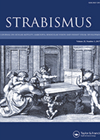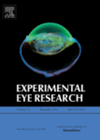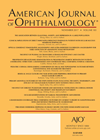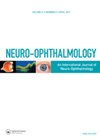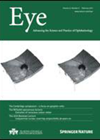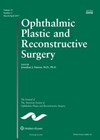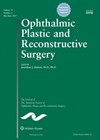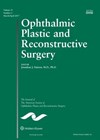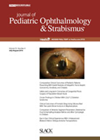
Journal Reviews archive for 2017
Pseudostrabismus leading to strabismus
The authors aimed to evaluate the incidence of strabismus in children initially diagnosed with pseudostrabismus and identify risk factors for development of strabismus. This was a retrospective review of 65 patients with a diagnosis of pseudostrabismus; two exo and 63...
A possible biomarker for diabetic retinopathy
Diabetic retinopathy (DR) is the most common form of diabetic eye disease, characterised by exudates, microaneurysms and haemorrhage. Early diagnosis is crucial for preventing visual loss. The risk of developing diabetic retinopathy is known to increase with age as well...
A standardised strategy for uveitis etiological diagnosis
This was a prospective, non-inferiority, multicentre randomised control trial, which aimed to assess the effectiveness of a standardised approach in the etiological diagnosis of uveitis versus an open strategy, where clinicians could perform any test. The authors developed their standardised...
A clinical review of optic neuropathy associated with amiodarone
The authors present a clinical overview of the occurrence of visual loss secondary to optic neuropathy associated with the use of the antiarrhythmic agent amiodarone. Amiodarone is prescribed for the management of atrial fibrillation and ventricular tachycardia / fibrillation. However,...
Protecting retinal ganglion cells
Glaucoma is considered to be a heterogeneous group of conditions giving retinal ganglion cells (RGC) damage. Lowering intraocular pressure (IOP) reduces the risk of progressive RGC loss in glaucoma. Regeneration of the optic nerve has been shown to restore some...
Stromal cell alignment in damaged cornea
Stromal keratocytes are responsible for wound healing in the cornea following damage. Keratocytes at the site of injury become activated and differentiate to myofibroblasts which secrete extracellular matrix (ECM) to close the wound, a response mediated by transforming growth factor...
Periocular sweat gland carcinomas
This is an interesting review of a rare group of tumours which together comprise the adnexal sweat gland carcinomas. Although there are only 22 patients, this is the largest cohort ever published. The authors summarise the clinical presentation, stage, management...
Bioengineered human tissue
This is a literature review of the current status of tissue engineering related to ocular and oculoplastic reconstructive surgery. The authors describe the process of bioengineering for tissue reconstruction. The aim is to reproduce functional tissue by the use of...
AlloDerm for correction of lower lid retraction
This is a retrospective review of 95 eyes of 54 patients undergoing orbital decompression for Graves’ orbitopathy. All patients had a swinging eyelid approach across the whole of the lower lid. Thirty-six eyes also had insertion of a 0.3mm thick...
Myopathic ptosis and lower lid retraction surgery
This is a description of a surgical technique which simultaneously addresses both the upper lid ptosis and lower lid retraction in patients with moderate to severe myopathic ptosis. The procedure was performed on 16 eyes of nine patients and involved...
Ptosis surgery outcomes
The purpose of this study was to evaluate the long-term outcomes of childhood ptosis surgery in a population-based cohort. The authors assessed reoperation rates, amblyopia, risk of lag, dry eye and other complications. This was a retrospective review of 47...
22q11.2 deletion syndrome
This study aimed to identify the ocular features of Turkish children born with this deletion syndrome. Sixteen children were reviewed (seven female and nine male) aged four months to 18 years. Two children died before the age of one year....

